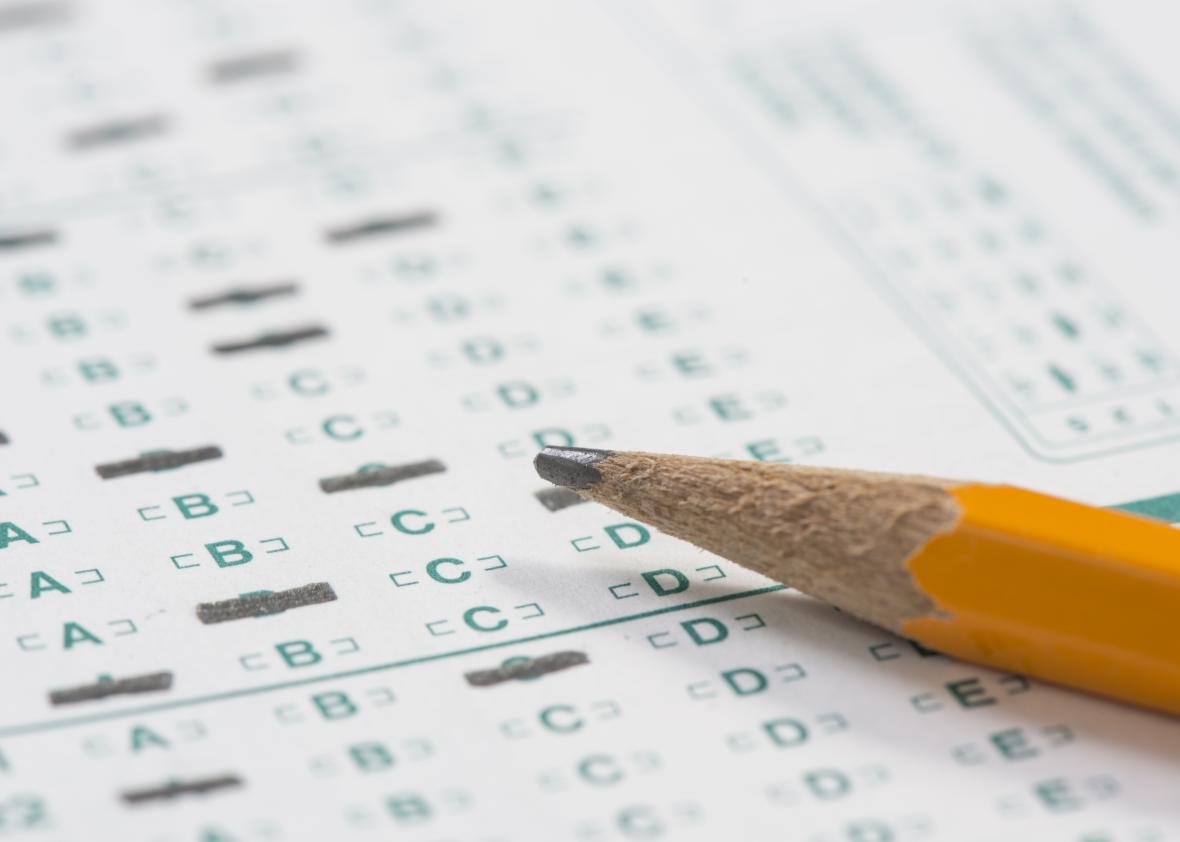Should annual standardized testing be required—or as required as No Child Left Behind made it—or should parents be allowed to keep their kids at home on testing days? As both houses of Congress attempt to rewrite the controversial bill and update the Elementary and Secondary Education Act, that was one of the bigger questions being lobbed around the two chambers recently.
Current federal law mandates that at least 95 percent of students at every school participate in the controversial standardized assessments. Schools that receive federal Title I funds can (at least in theory) be dinged if they fail to meet this threshold; for other schools, there are no such hard-and-fast consequences. So what happens if, say, an eye-popping 1 in 6 eligible kids opts out of the testing, as they did in New York state this year? Pretty much nothing—for all the threats, there is no real mechanism in place to enforce the 95 percent participation rate. But that doesn’t mean there isn’t a very legitimate reason for encouraging it, or for administering the tests in the first place.
Last week, the House approved an amendment that would allow kids to sit out of tests without any even theoretical penalty, a measure that civil rights groups vigorously oppose. As a press release opposing the House amendment put out by an advocacy group for students with disabilities put it, letting kids opt out
would gut one of the most meaningful provisions in all of the ESEA—the current requirement that states assess at least 95 percent of all students using the same, objective measuring stick. Adoption of this amendment would send the signal that Congress is perfectly fine with actions to systemically discriminate, and coordinated efforts to counsel certain kids out of the state accountability system.
That’s the basic problem with the whole feel-good opt-out movement. If only a random fraction of the students supposed to take the tests do so, many of the kids most at risk—and those tend not to be the ones whose outraged parents are staging rallies and writing letters to the editor—will be encouraged to stay home. And, for all its considerable flaws, No Child Left Behind was remarkably effective at gathering data about the current student population in the U.S. and measuring where the achievement gap yawned the widest. Make the tests optional and you lose that transparency.
Put aside the very real questions of whether teaching to the test undermines the quality of education and whether it’s unfair to evaluate teachers based on extremely flawed tests (yes and yes). The most positive outcome of the testing regimen No Child Left Behind imposed is that we now know quite a bit about the students in our public school system and about which groups need the most help. The right to cherry-pick the kids who should and should not take those tests, as would inevitably happen, would reverse that progress, which is why the White House issued a veto threat if one of these amendments made it into the final bill. (Many Republicans, like former education secretary and current chairman of the Senate Health, Education, Labor and Pensions Committee Lamar Alexander, opposed it because the measure, like the bill they’re trying to replace, takes power from the states and gives it to the feds.)
On Tuesday, the Senate’s version of the opt-out amendment, offered by ur–Tea Partier Mike Lee of Utah, came up for a vote. This one was defeated 32–64. Now onto the next firestorm.
